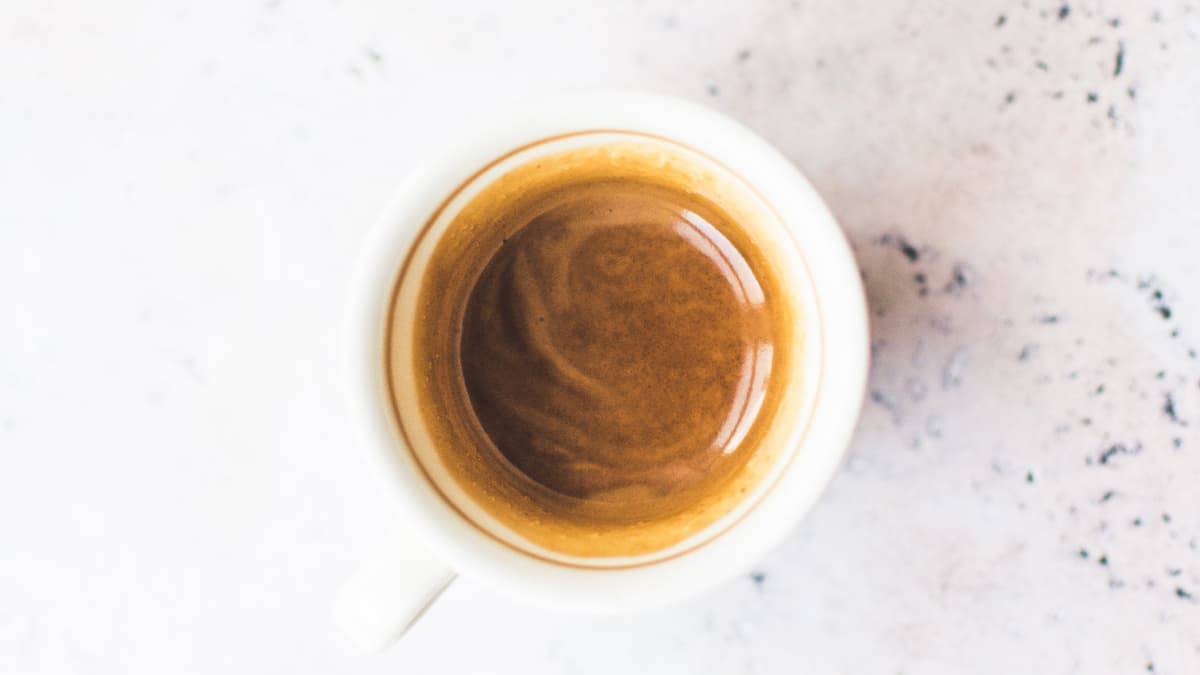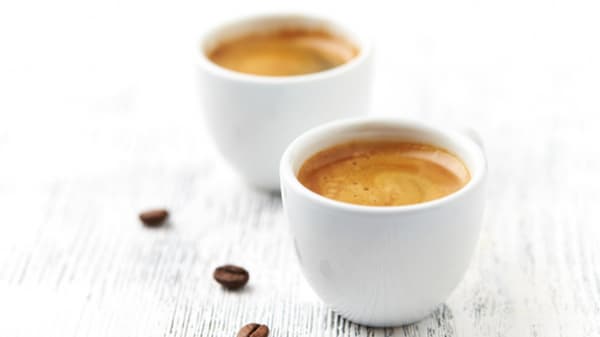How To Avoid Making Sour Espresso
Making espresso is an art. And like most art, it should produce a reaction of delight. An espresso should be rich and smooth. Intense. Pleasant.
But at some point it’s happened to you. You pull a shot and your face puckers up. Good grief, what happened? Why does this espresso taste sour?
Or perhaps you’re appalled by how bitter it is. Or by the burnt taste that overwhelms it.
But fear not. These problems are avoidable. To correct the tiny mistakes that lead to unpleasant flavors, you need to understand what factors go into a great-tasting espresso.
Let’s take a look at how you can fix an espresso that tastes sour, bitter, or burnt.

What Is Sour Espresso?
Getting a sour taste in espresso is common, unpleasant, and overwhelming. You can’t get around the bad taste of a sour espresso, and it’s only good for the garbage bin.
What are the telltale signs that let you know an espresso will be sour? Let’s discuss three major areas: the puck, crema, and taste.
Puck
You can see a sour espresso in the puck or the used coffee grounds that are left in the portafilter after you’re finished pulling the espresso. When you try to knock the puck out, you’ll see that it’s saturated, like a patch of mud on a spring day. Not good.
Crema
Perfectly extracted espresso has a beautiful crema from the coffee oils that’s a rich brown color. If the pour is thin, light, and blonding (which refers to a pour that has a pale yellow color), you’ll know something went wrong. You’ll get a crema that is thin and light.
Flavor
And the most unpleasant part is in the taste. It will be overwhelmingly sour, the type of sour that eclipses anything else that might have been present in the espresso.
What makes an espresso taste sour? Let’s diagnose some of the common reasons.

Espresso Taste Sour? Here’s Why
You saw it would be sour when you pulled the shot. It came out fast, under 15 seconds. The pour and crema were pale. And your puck was wet. All those signs point to problems with extraction.
Underextracted espresso coffee tastes sour and weak. Of course, overextracting your coffee isn’t a good thing either, but we’ll get to that in a bit.
Before we get into the main factors you can change to avoid underextraction and improve an espresso that tastes sour, let’s discuss a few basics about coffee brewing that also apply to making espressos.
Your equipment must be clean
Old coffee oils and grounds stuck in random edges of your espresso machine will create an off coffee taste.
Your coffee should be ideal for espresso
Obviously, you should start with high-quality coffee beans. High standards throughout coffee cultivation, harvesting, and processing are vital.
Mistakes in these areas can make the coffee beans sour or have off-flavors, and no amount of fiddling with the espresso machine will improve the results.
Additionally, coffee beans should be freshly roasted but not too fresh (about one or two weeks after the roasting date).
The all-important grinder
If you’re using a blade grinder, stop. The inconsistent grind and the heat buildup will give you an espresso that’s not fit to be slurped. Use a burr coffee grinder and grind fine.
Now let’s get into three factors you can change to avoid your espresso tasting sour. The three main factors affecting the taste of espresso coffee are dose, yield, and brew time.
Dose (and ratio)
Check your brew ratio to make sure you’re using the right dose for the filter basket. The brew ratio refers to the amount of coffee grounds you use (dose) in relation to the amount of brewed espresso (yield).
You can begin with the standard 1:2 ratio (coffee to water). Most baristas use a dose between 18 and 21 grams of coffee.
If you use a lighter roast coffee, consider using a lower dose (17 to 19 grams of coffee) to offset the decreased solubility in comparison with a darker roast.
For espresso that’s meant for milk-based drinks, a higher ratio might be more appropriate so that the coffee flavor stands out.
You also want to consider the type of coffee you’re using, since a light roast or certain varieties might require a ratio as high as 1:3. If you need to adjust the dose, do so in small increments (0.2 grams) at a time.
You want to ensure an accurate dose for each shot of espresso. Use a grinder that has an on-demand doser or take the time to weigh each dose.
Also, keep an eye on grind size. It has to be fine so that the extraction lasts long enough. If your grind is too coarse, the water will rush through the coffee and won’t extract properly.
While we’re on the subject of coffee grounds, make sure you press firmly enough when tamping. You want an even, flat coffee puck that encourages good extraction.
If the coffee grounds are not evenly tamped, you’ll get channeling, where the water flows in just one area. That will give you underextracted coffee and espresso that tastes sour.
Yield (and timing)
The second aspect is yield, which is connected to timing.
How long you pull the espresso shot determines the yield. It also affects the taste because the first elements to be extracted in espresso are the bright and sour notes. Then come the oils and sweetness.
If you don’t pull the espresso shot long enough, the only thing you extract will be those bright and sour notes.
In that kind of fast extraction, you haven’t allowed time for the oils and sweetness to be extracted, so you’ll have a thin coffee and a sour-tasting brew.
Although timing is not the most vital part of pulling a successful espresso shot, it does play a role. When you pull a longer shot, you leave the water in contact with the coffee grounds for more time and potentially avoid underextraction.
You also get a higher yield. Just like you weigh the dose, you need to weigh the yield, at least while you’re learning.
Generally, an espresso shot that takes less than 20 seconds is going to taste sour. To fix sour flavor, aim for an extraction time between 20-30 seconds.
To achieve that, you might have to make the coffee grind size finer so the water takes longer to pass through the coffee. Then you can extend the pull time.
Water temperature
The ideal brew temperature for espresso is between 195°F – 204°F (90.5°C to 96°C). Measure the temperature of the water as it comes out of the group head and calibrate as necessary.
To sum up these points, to correct a sour taste in espresso, you want to use the right ratio, use a fine grind, tamp firmly, keep an eye on timing and yield, and check the brew temperature.
If you need to change any of these variables, do just one change at a time.
Take note of the change and the result. Then move on to just one other change and take notes. That way, you’ll know what you did right (to replicate it) or what you did wrong (to avoid it at all costs).

Is Your Espresso Bitter?
You can see it before you taste it. You know something is wrong. You’ll see the puck is dry. The pour barely came out. And then you tasted it. Bitter, harsh, and burnt.
What did you do to that coffee?
The last note to be extracted in an espresso is the bitter taste. Generally, an espresso shot that tastes harsh, bitter or burnt has been overextracted. It can also be the result of an extraction that was too slow (36-40 seconds).
If your espresso tastes bitter, the extraction time might have been too long. If you let your shot go way too long, the bitterness will be overpowering.
Keep your extraction within the time frame of 25-30 seconds. When you see the pour turn a light color, it’s time to stop.
If you’re trying to pull a longer shot to get a more intense coffee, please don’t. You’ll simply wind up with bitter coffee.
If you want more intensity, pull another shot or see if you can use a larger basket. But don’t try to fit too much coffee into a small basket or try to extract longer.
Grind size
If your shot pulls too slowly and tastes like it got overextracted, change the grind size. Go for a slightly coarser grind so the water will flow through the grinds at a faster pace. Remember to purge the grinder to make sure all previously ground coffee comes out of the dosing chamber and chute.
Ratio
You may have started with the standard 2:1 ratio. If your espresso tastes burnt or bitter (and thus overextracted), it’s time to rethink that ratio.
Adjust the amount of water so you can do a full extraction within the 30 second window.
Why Your Espresso Tastes Burnt
The shot dripped out slowly, agonizing to come out. It’s liike squeezing juice from a dry lemon. The pour is extremely dark. And you got a dismally reduced shot volume.
Again, the problem may be overextraction. The coffee grinds resist the movement of water and extract too slowly. How can you fix this? We’re back to the basics of ratio, grind and tamp.
Ratio – are you using too much coffee for your filter basket? If you do, that cramped puck will not extract properly. You might want to consider reducing the dose or increasing the yield, which can give you more delicate flavors.
Grind – did you grind too fine for your espresso machine or was it ground unevenly? Your shot will be channeled, with the water moving through just part of the puck. Try using a coarser grind.
Tamp – did you tamp so firmly that water can’t make its way through the coffee? Again, you’ll get a channeled shot.
Extraction Hints & Tips
When making espresso, sometimes we want a cut and dry answer. We just want to be told how much coffee to use and how long to pull the shot.
But espresso doesn’t work like that.
You need to factor in the espresso machine you’re using, the beans you have and when they were roasted, the grinder you use, the quality of water, and how the drink will be consumed (cup size, the addition of milk, etc).
Then you can figure out the ideal dose, timing, and extraction time.
During the espresso training sessions I run, we taste every coffee the baristas-in-training produce.
Often just a glance at the shot lets me know what it will taste like. But we taste them all so the new baristas begin to associate color, crema, and taste with the variables that went into the shot. They begin to associate sour tastes and the lack of sweetness with underextracted coffee. And they understand that burnt or overly bitter tastes can be associated with overextraction.
As you continue to pull espressos, taste them. Write down the details of each shot and the results. Make small changes and only change one variable at a time.
As you continue to experiment, you’ll learn the right balance and how to avoid mistakes.
In my espresso training sessions, I notice that baristas learning to pull espresso shots have a lot of difficulty learning to tamp. Tamping evenly is a challenge.
Learn from watching experienced baristas tamp. Of course, observation only gets you so far, and you need to practice.
Wrapping Up
The art of making the perfect espresso can seem like a difficult dream to reach, but don’t give up.
Experiment with ratios, grind size and brew time. Keep in mind the end result you’re looking for and keep track of each change.
Once you find the correct numbers, work towards reaching them consistently. Armed with the right ratio, coffee beans, grind size, brew time for your equipment, you will soon be pulling espressos that are a work of art.

